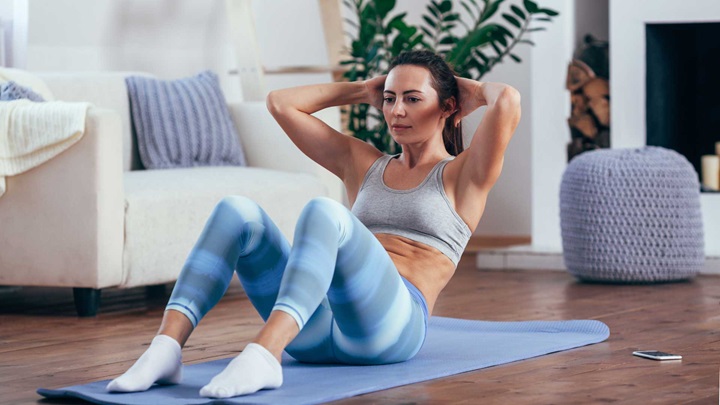Finding time for lengthy gym sessions can feel impossible when you’re juggling work, family, and social commitments. The good news? You don’t need to spend hours lifting weights or running on treadmills to maintain your fitness. With the right approach, you can stay in great shape by making smart choices throughout your day.
Many people believe that effective fitness requires dedicated gym time, expensive equipment, or complex workout routines. This mindset often leads to an all-or-nothing approach where people either commit to intense exercise regimens or abandon fitness altogether. The reality is much more encouraging—small, consistent actions can deliver remarkable results.
Your body responds positively to regular movement, regardless of whether that movement happens in a gym or your living room. By incorporating strategic activities into your existing routine, you can build strength, improve cardiovascular health, and maintain a healthy weight without dramatically restructuring your schedule.
This approach isn’t about cutting corners or settling for less. It’s about working smarter, not harder, to achieve your fitness goals while respecting the demands of modern life.
Incorporate Active Habits into Your Daily Routine
The most sustainable fitness improvements come from habits you can maintain long-term. Instead of viewing exercise as a separate activity you must squeeze into your day, look for opportunities to add movement to activities you’re already doing.
Make Transportation Your Workout
Your daily commute offers excellent opportunities for physical activity. If you live within walking or cycling distance of work, consider these alternatives to driving. Even parking further away from your destination or getting off public transport one stop early can add valuable steps to your day.
For those who work from home, create artificial commutes by taking a brisk walk before starting your workday and another when you finish. This simple habit provides exercise while creating clear boundaries between work and personal time.
Choose Movement Over Convenience
Small decisions throughout your day can significantly impact your fitness level. Take stairs instead of elevators whenever possible. Stand while talking on the phone. Walk to a colleague’s desk instead of sending an email for quick conversations.
These micro-workouts might seem insignificant individually, but they accumulate into meaningful activity levels. Research shows that people who incorporate more movement into their daily routines often maintain better cardiovascular health than those who exercise intensely but remain sedentary otherwise.
Quick Home Workouts
Home workouts eliminate common barriers to exercise—travel time, gym fees, and scheduling constraints. You can achieve excellent results with bodyweight exercises that require no equipment and minimal space.
Bodyweight Exercise Basics
Focus on compound movements that work multiple muscle groups simultaneously. Push-ups strengthen your chest, shoulders, and triceps while engaging your core. Squats target your legs and glutes while improving balance and stability. Planks build core strength and improve posture.
Create a simple routine combining these foundational exercises. Perform each movement for 30-45 seconds, followed by 15-20 seconds of rest. Complete three to four rounds for a comprehensive workout in under 15 minutes.
High-Intensity Interval Training (HIIT)
HIIT workouts maximize results in minimal time by alternating between intense activity and brief recovery periods. A simple HIIT routine might include 30 seconds of jumping jacks, followed by 30 seconds of rest, then 30 seconds of burpees, followed by another rest period.
The beauty of HIIT lies in its efficiency and adaptability. You can adjust the intensity and duration to match your fitness level and available time. Even a 10-minute HIIT session can provide cardiovascular benefits comparable to longer, steady-state exercise.
Utilize Lunch Breaks for Fitness
Your lunch break represents a consistent opportunity for physical activity that doesn’t require waking up earlier or staying up later. Strategic use of this time can significantly boost your daily activity levels.
Power Walking
A brisk 20-30 minute walk during lunch provides cardiovascular exercise while giving you mental clarity for the afternoon ahead. If possible, find a route that includes hills or stairs to increase the intensity. Walking with colleagues can make this activity more enjoyable while building workplace relationships.
Desk-Based Exercises
When leaving the office isn’t practical, desk exercises can help combat the negative effects of prolonged sitting. Simple movements like calf raises, seated leg extensions, and shoulder rolls can be performed discretely throughout the workday.
Consider setting reminders to stand and move for two to three minutes every hour. These brief activity breaks improve circulation, reduce muscle tension, and can enhance productivity and focus.
Weekend Activity Boost
Weekends offer opportunities for longer, more varied physical activities that can complement your weekday efforts. Use this time to engage in activities you genuinely enjoy, making fitness feel less like work and more like recreation.
Outdoor Adventures
Hiking, cycling, swimming, or playing recreational sports provide excellent exercise while offering mental health benefits from spending time outdoors. These activities often feel more like fun than formal exercise, making them easier to maintain long-term.
Active Social Time
Replace some sedentary social activities with active alternatives. Instead of meeting friends for drinks, suggest a walk in the park or a game of tennis. Many people are grateful for friends who initiate active social plans, as it helps them achieve their fitness goals too.
The Role of Diet in Maintaining Fitness
Exercise alone cannot overcome poor dietary habits, but you don’t need complicated meal plans to support your fitness goals. Focus on sustainable changes that complement your active lifestyle.
Smart Portion Control
Use smaller plates and bowls to naturally reduce portion sizes without feeling deprived. Eat slowly and pay attention to hunger cues. Many people eat past the point of satisfaction simply because food is available, not because their body needs more fuel.
Nutrient Timing
Eat a combination of protein and carbohydrates within two hours after exercise to support recovery and muscle building. This doesn’t require special supplements—a piece of fruit with nuts or yogurt with berries works perfectly.
Hydration Habits
Proper hydration supports every aspect of fitness, from performance during exercise to recovery afterward. Keep a water bottle at your desk and aim to drink consistently throughout the day rather than trying to catch up with large quantities at once.
Frequently Asked Questions
What are some easy exercises to do at home?
Start with bodyweight exercises that require no equipment: push-ups (modify on knees if needed), squats, lunges, planks, and glute bridges. These exercises work major muscle groups and can be performed in small spaces. Begin with 2-3 sets of 8-12 repetitions for each exercise, adjusting based on your fitness level.
How can I stay active at work?
Take the stairs instead of elevators, park further from the building entrance, stand during phone calls, and walk to colleagues’ desks for conversations. Set hourly reminders to stand and stretch. Consider using a standing desk for part of your workday, and organize walking meetings when appropriate.
What kind of diet supports a fit lifestyle?
Focus on whole foods including lean proteins, fruits, vegetables, whole grains, and healthy fats. Limit processed foods, sugary drinks, and excessive portions. Meal timing matters too—eat a balanced breakfast, don’t skip meals, and include protein with each meal to maintain stable energy levels throughout the day.
How much exercise do I really need to stay healthy?
Health guidelines recommend at least 150 minutes of moderate-intensity exercise per week, which breaks down to just over 20 minutes daily. This can include brisk walking, dancing, gardening, or any activity that elevates your heart rate. The key is consistency rather than intensity.
Can I lose weight without going to a gym?
Absolutely. Weight loss occurs when you burn more calories than you consume, regardless of where that activity happens. Combining increased daily movement with mindful eating habits can be highly effective for weight management. Home workouts, outdoor activities, and dietary improvements can all contribute to healthy weight loss.
Transform Your Health with Small, Consistent Actions
Staying fit without extensive gym time isn’t about finding shortcuts—it’s about building sustainable habits that fit naturally into your life. The combination of increased daily movement, efficient home workouts, and mindful eating creates a foundation for long-term health that doesn’t require dramatic lifestyle overhauls.
Start with one or two changes that feel manageable, then gradually add more as these become routine. Remember, the best fitness plan is one you can maintain consistently over time. Small actions, performed regularly, create lasting transformation in both your physical health and overall quality of life.




